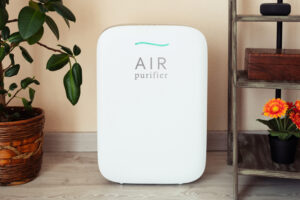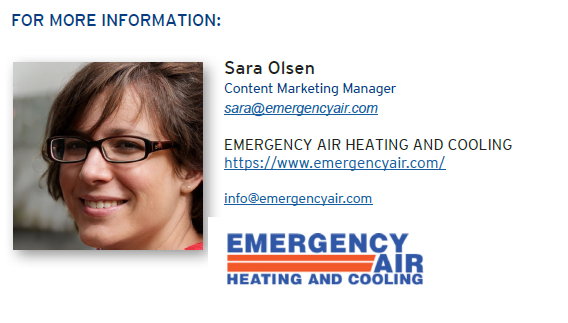 Let’s look at improving Indoor air quality in commercial buildings during Winter. There’s this expression about “going out for some fresh air” that we’ve been using for ages, and it suggests — correctly at that — that the quality of indoor air these days leaves so much to be desired, particularly during the winter months.
Let’s look at improving Indoor air quality in commercial buildings during Winter. There’s this expression about “going out for some fresh air” that we’ve been using for ages, and it suggests — correctly at that — that the quality of indoor air these days leaves so much to be desired, particularly during the winter months.
Nowhere is the idea of diminished indoor air quality during winter truer than in commercial buildings. Buildings these days typically have excellent insulation to ensure the cold stays out in winter. Commercial buildings nowadays also aim to reduce their energy costs by installing extremely efficient windows and doors. They also keep up with their commercial heating repair and maintenance requirements to sustain that efficiency for the duration of the season.
Download Printable Article (PDF) >>>
However, there is a downside to all that efficiency. With warm air hardly ever getting out and cold air from the outside barely getting in, commercial buildings often become a repository of recirculated air. The people inside these buildings end up breathing mostly stale air, which would typically bring along contaminants as it gets cycled through the commercial building all winter long.
Eventually, there will be a buildup of dust, mold spores, pollen, and odors, which will lead to polluted indoor air that can exacerbate health problems such as asthma and increase the risk of developing serious respiratory illnesses like pneumonia among commercial building occupants.
It’s a good thing that there is no shortage of ways to clean the air in commercial buildings when temperatures drop. Here are tips on improving indoor air quality in commercial buildings for the winter.
6 Steps to improving Indoor air quality in commercial buildings
(1) REPLACE AIR FILTERS PERIODICALLY
The air filters of a building’s HVAC system play a crucial role in keeping the air clean. To help air filters do their jobs properly, you have to make sure that they are cleaned or replaced regularly, as dust and other pollutants will surely accumulate over time and cause them to clog and affect airflow.
By maintaining the air filters, you can minimize the circulation of contaminants in your building’s indoor air.
(2) INSTALL AIR PURIFIERS
Air purifiers are proving to be great at removing particulates from the air, with some types even capable of killing bacteria, viruses, and other pathogens. With an air purifier doing its job, building occupants can breathe cleaner, healthier air even at the height of winter.
When installing air purifiers in a commercial building, always take factors such as room size, pollutant levels, and sensitivity into consideration to ensure that they perform as expected.
(3) IMPROVE VENTILATION
For commercial buildings sealed tightly for the winter, it would seem counterintuitive to let outdoor air in from time to time. However, increasing ventilation is the only way to keep indoor air fresh while letting the bad stuff out.
Opening a window or door periodically in certain areas can be a temporary solution, but for commercial buildings, the top option would be a heat-recovery ventilation system.
Also referred to as air-heat exchangers, heat-recovery ventilation systems are designed to extract stale air and replace it with fresher air from the outside.
(4) MANAGE SOURCES OF INDOOR AIR POLLUTION
A commercial building has myriad sources of indoor air pollution, from cigarette-smoking occupants to emissions from products used in the building, like paint and cleaning products.
Managing these indoor pollution sources can help your campaign for better indoor air quality in your building. Banning tobacco use and implementing strict rules about the use and proper ventilation of harsh chemicals within the building would be a good start.
(5) KEEP THE BUILDING CLEAN
Something as simple as keeping all areas of a building clean can already contribute to improved indoor air quality.
To keep dust and other pollutants from recirculating into the air, the use of vacuum cleaners equipped with HEPA filters would be an excellent idea.
As much as possible, refrain from using cleaning products that contain harsh chemicals. Only use such products if they’re necessary for the cleaning job and if the target area has proper ventilation.
(6) PERFORM REGULAR HVAC MAINTENANCE
A commercial building’s HVAC system is primarily responsible for producing and distributing heated air during the winter. Without regular preventative maintenance, that same HVAC system will perform poorly and contribute to the building’s poor indoor air quality.
When an HVAC system is maintained regularly, all its parts will be thoroughly inspected and repaired, if necessary. HVAC professionals can also pinpoint duct leaks, improper venting, and other possible sources of indoor air quality contamination and fix them right away.
These are just some of the things you can do to improve indoor air quality in winter, but they’re great places to start cleaning up the air in your building. If you have more concerns about indoor air quality, a consultation with your trusted commercial HVAC contractor should be able to help you address all of them.



